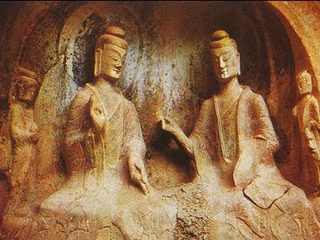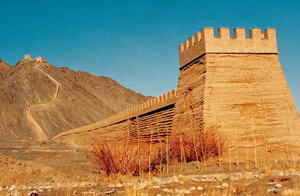Yumenguan Pass

Yumenguan Pass, located on a hillock 90 kms northwest of Dunhuang city, used to be one of the two critical defensive passes protecting Dunhuang from invasion from the West about two thousand years ago. At that time, anyone in China wishing to take the Silk Road west (or east into China through Dunhuang) would go through this pass. So it is an important pass of the north route on the Silk Road. After Zhangqian served as an envoy to the West Region, a mass of silk and tea from Central China were exported abroad through this pass, and in return, fruit, specialties and religion culture were brought in.
If you are familiar with ancient Chinese poetry, then you may recall a poem written by the renowned Tang Dynasty poet, Wang Zhihuan, describing the unique scenery and atmosphere here.
Yumenguan Pass was also called "Small Square City", named after a rare square piece of jade that was sent from the west to the Han emperor. The present city was constructed with rammed earth with two gates respectively in its west and north directions. The wall is 10 meters high and its top is 3 meters wide and bottom 5 meters. In modern times, there are two gates in each of the western and northern sides of the pass built of yellow clay. Owing to severe erosion, some parts of the walls have collapsed, forming huge holes. On the northern side, there is a road leading west towards the ancient village of Hechang (15km away), which used to be the granary for the pass garrison.
Why was the name "Small Square City" replaced by "Yumenguan Pass"? Legend had said that a jade was set on the gate of "Small Square City" for the sake of ensuring the security of passing trade caravans. So the city was named as "Yumenguan Pass" since then.




